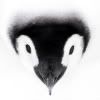Salton Sea poses earthquake threat to Southern California
Originally published June 26, 2011

The southern San Andreas fault extends beneath the Salton Sea. Scientists studying lake-floor sediment were able to reconstruct the seismic history along this section of the fault system. — Scripps Institution of Oceanography
The Salton Sea east of San Diego is a deceptively dangerous backwater, hiding faults that repeatedly produce powerful earthquakes that jolt all of Southern California, says a new study by the Scripps Institution of Oceanography.
Scientists found strands of the southern San Andreas fault beneath the lake that appear to have been regularly triggered by the combined strain of smaller, nearby faults and historic flooding from the Colorado River.
The ruptures generated at least five 7.0 or larger quakes about every 180 years until the early 20th century, when authorities stopped allowing massive amounts of water to flow into the lake 90 miles east-northeast of San Diego, the study says. The last big quake happened about 325 years ago.
"It's possible that ending the diversion re-set the earthquake clock; we're more than 100 years overdue for a quake that could be as big as 7.5,'' said Neal Driscoll, a Scripps geologist who co-authored the study, published Sunday in the journal Nature Geoscience.
"The fault could send tremendous energy to the Los Angeles area if it broke from the south-to-north, and could cause shaking that would make soil liquefy in bays and estuaries in San Diego County."
The San Andreas is the dividing line between the Pacific and North American plates, two great pieces of Earth's lithosphere. Scientists have long known that there are other large and small faults on either side of the San Andreas. But they only recently discovered worrisome branches of the San Andreas beneath the Salton Sea, which rests in the spot once covered by a much larger ancient lake known as Cahuilla.
Smaller faults intersect the San Andreas at an angle. The study says periodic flooding in the lake adds stress to smaller faults that in turn sometimes help set off the San Andreas.
"It's a geological chain reaction," says Driscoll, who worked with researchers from the U.S. Geological Survey and University of Nevada.
There hasn't been a big quake in that area of the lake since the federal government built dams that controlled flooding on the Colorado.
"We've been baffled as to why the southern San Andreas hasn't gone," said Debi Kilb, a Scripps seismologist who co-authored the study. "It's been compared to a woman who is 15 months pregnant. Now this paper offers one explanation why."
SUNDAY UPDATE: Two small quakes jiggle the Salton Sea
Quake news: Go to Facebook, type SDUT Earthquake in the Search field, and click the Like button when it appears. You'll get news, information and videos about seismic activity in Southern California.
SourceSee video of the formation of Lake Cahuilla and the modern Salton Sea HERE
--
Got Penguins?
Penguin News Today
The Science of Penguins
Gentoo Penguins of Gars O'Higgins Station, Antarctica

Wolves & Werewolves/Science, Myth & News
http://canislupus101.blogspot.com/
http://dances-with-werewolves.blogspot.com/
http://throughgoldeneyes.blogspot.com/
__._,_.___
No comments:
Post a Comment